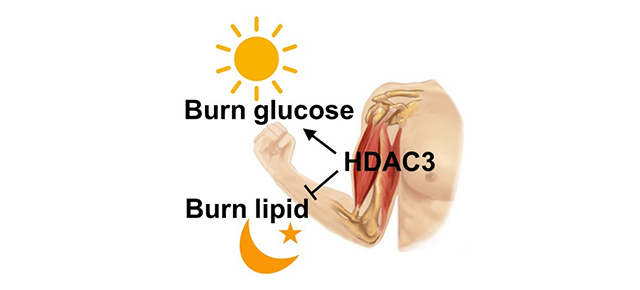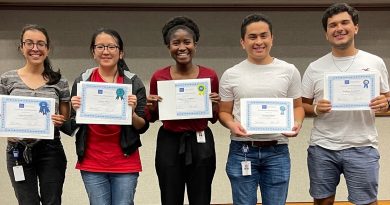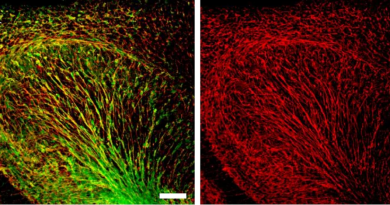Deep brain stimulation overcomes cognitive deficits in Rett mice

Deep brain stimulation — usually used to treat movement disorders – overcomes the learning and memory deficits in mice whose symptoms mimic those of Rett syndrome, a neurological disease usually found in young girls, said researchers led by those from Baylor College of Medicine and the Jan and Dan Duncan Neurological Research Institute at Texas Children’s Hospital.
In a report in the journal Nature, Dr. Huda Zoghbi, professor of molecular and human genetics at Baylor and Dr. Jianrong Tang, assistant professor of pediatrics, led a team that used deep brain stimulation on mouse models of Rett syndrome. Deep brain stimulation involves implanting electrodes in the brain to regulate abnormal impulses or chemicals of certain cells. It is best known as a treatment in movement disorders such as Parkinson’s and dystonia. Rett syndrome, by contrast, shows up in girls in the second year of life, when they lose the ability to talk and learn, develop balance problems and incessant handwringing.
Rett mouse model
Zoghbi and Tang chose Rett for this experiment because they have a good animal model that exhibits many of the symptoms of the disorder itself including learning and memory deficits.
They decided to focus their attention on the fornix, a part of the brain that projects into the hippocampus,” the brain region that is associated with learning and memory, said Zoghbi. Studies have shown that stimulating the fornix in rats improved their learning and memory.
Stimulating forniceal area
When Tang, Zoghbi and their colleagues stimulated this forniceal area, using a parameters similar to those used in the clinical setting, in the Rett mice as well as normal mice, they found improvement in learning and memory.
“We found that all hippocampal learning tests have improved and plasticity or changes in neuronal connections went back to normal levels,” said Tang. “We also found that the formation of new neurons (neurogenesis) was compromised in the Rett mice but that deep brain stimulation enhanced neurogenesis”.
Electrophysiology

Tang, who is an expert in electrophysiology as well as an assistant professor of pediatrics at Baylor and director of the In Vivo Neurophysiology Core in the Neurological Research Institute at Texas Children’s Hospital, said the ability to use electrophysiologic recordings on awake animals made the placement of the electrodes and the settings of the deep brain stimulation more accurate.
The next steps are to figure out the ideal frequency of deep brain stimulation and the duration of the benefit.
More than that, it might point the way to helping other neurological diseases with a similar symptom profile or phenotype, said Zoghbi, who is director of the Neurological Research Institute.
Many neurological diseases
“There are many neurological diseases, each with its own genetic cause but very similar symptoms,” she said. “Solving the problems in such diseases one at a time will be hard. However, grouping them in a way that we can approach them in the same way clinically would be easier.”
One way would be to group such disorders by genetic defects that might cluster in a particular biochemical pathway. An alternative would be to group them by symptoms and determine the network basis for the symptoms.
In the report, the authors wrote: “Although this study was limited to hippocampus-based learning and memory, it is remarkable the DBS (deep brain stimulation) could exert any benefit in the face of such profound cognitive impairments as those caused by RTT (Rett syndrome)….Our studies lead us to suggest that DBS should be explored in other models of intellectual disabilities and eventually in human patients, particularly those conditions that cause more focal deficits in learning and memory.”
Zoghbi is also a professor in the departments of neuroscience and pediatrics. Both she and Tang are in the Neurological Research Institute.
Others who took part in the work include Shuang Hao, Bin Tang, Zhenyu Wu, Kerstin Ure, Yaling Sun, Huifang Tao, Yan Gao, Akash J. Patel, Daniel J. Curry, and Rodney C. Samaco, all of Baylor. Zoghbi is also an investigator with the Howard Hughes Medical Institute.
Funding for this work came from the W. M. Keck Foundation (H.Y.Z. and J.T.), the Cockrell Family Foundation, the Rett Syndrome Research Trust, the Carl. C. Anderson, Sr. and Marie Jo Anderson Charitable Foundation, NIH (Grant R01NS057819 [H.Y.Z]), and the Howard Hughes Medical Institute (H.Y.Z.), NIH (Grant DP5OD009134 [R.C.S]), Grant R25 N070694 [A.J.P.]) and in part by the Neuroconnectivity Core, Mouse Neurobehavioral Core, and Neurovisualization Core of IDDRC at Baylor College of Medicine (Grant U54HD083092 from the Eunice Kennedy Shriver National Institute of Child Health & Human Development), and the Grant C06RR029965 from the National Center for Research Resources.



